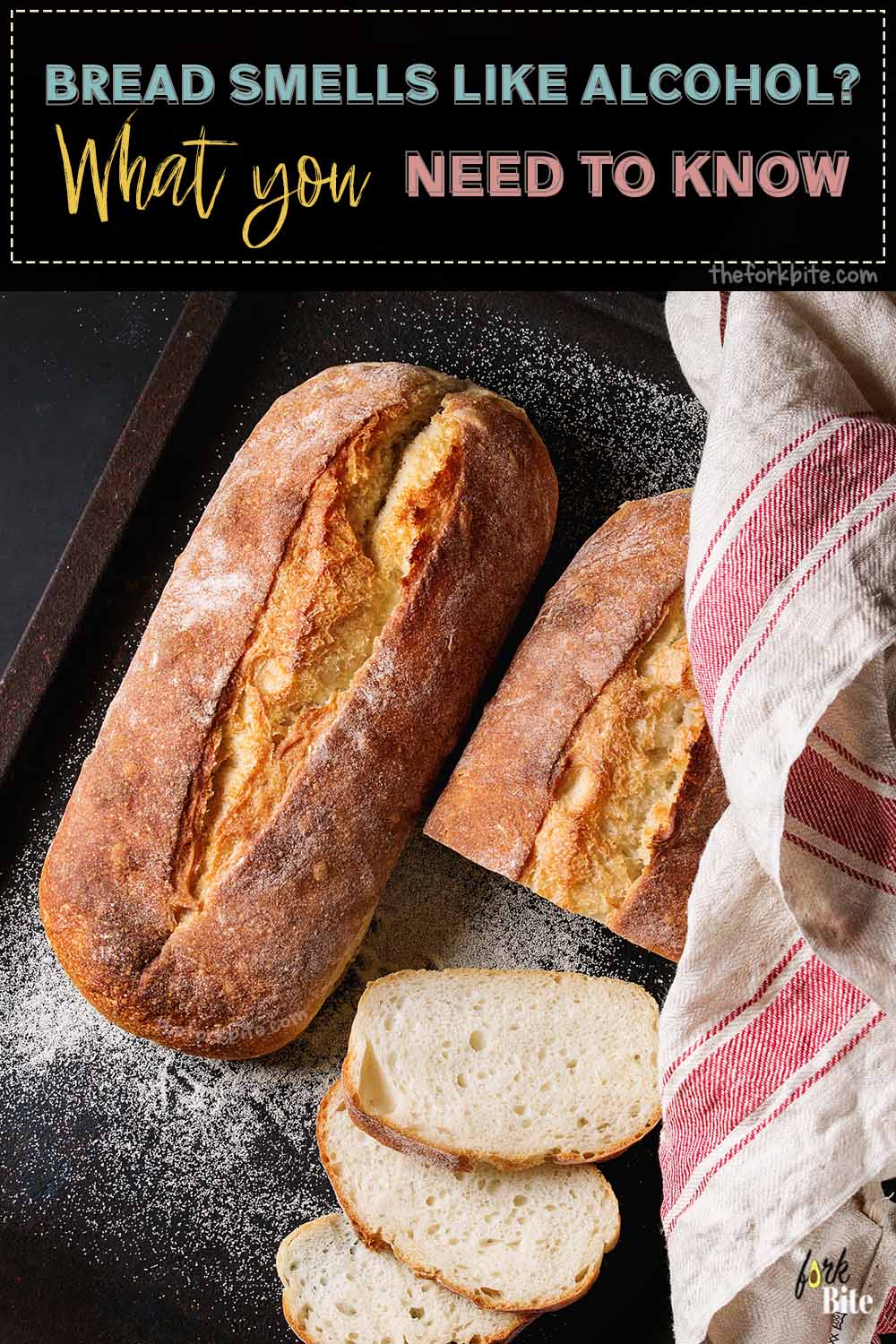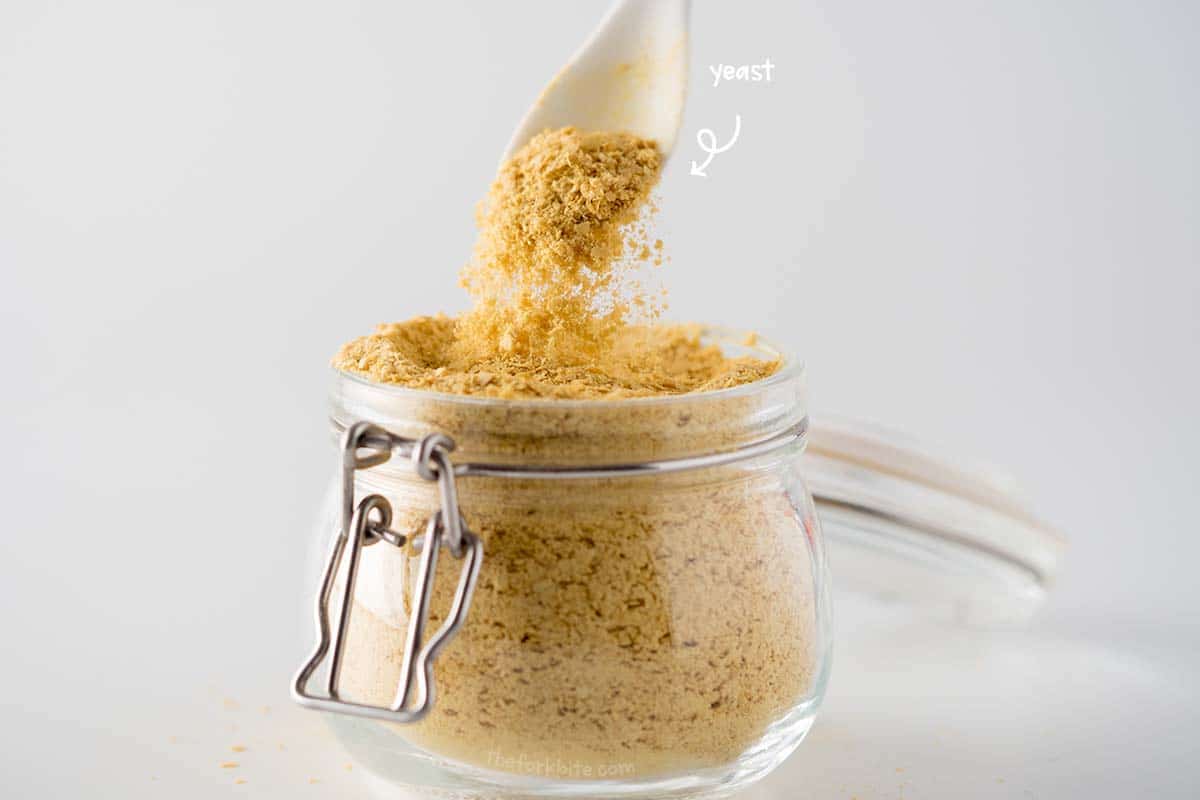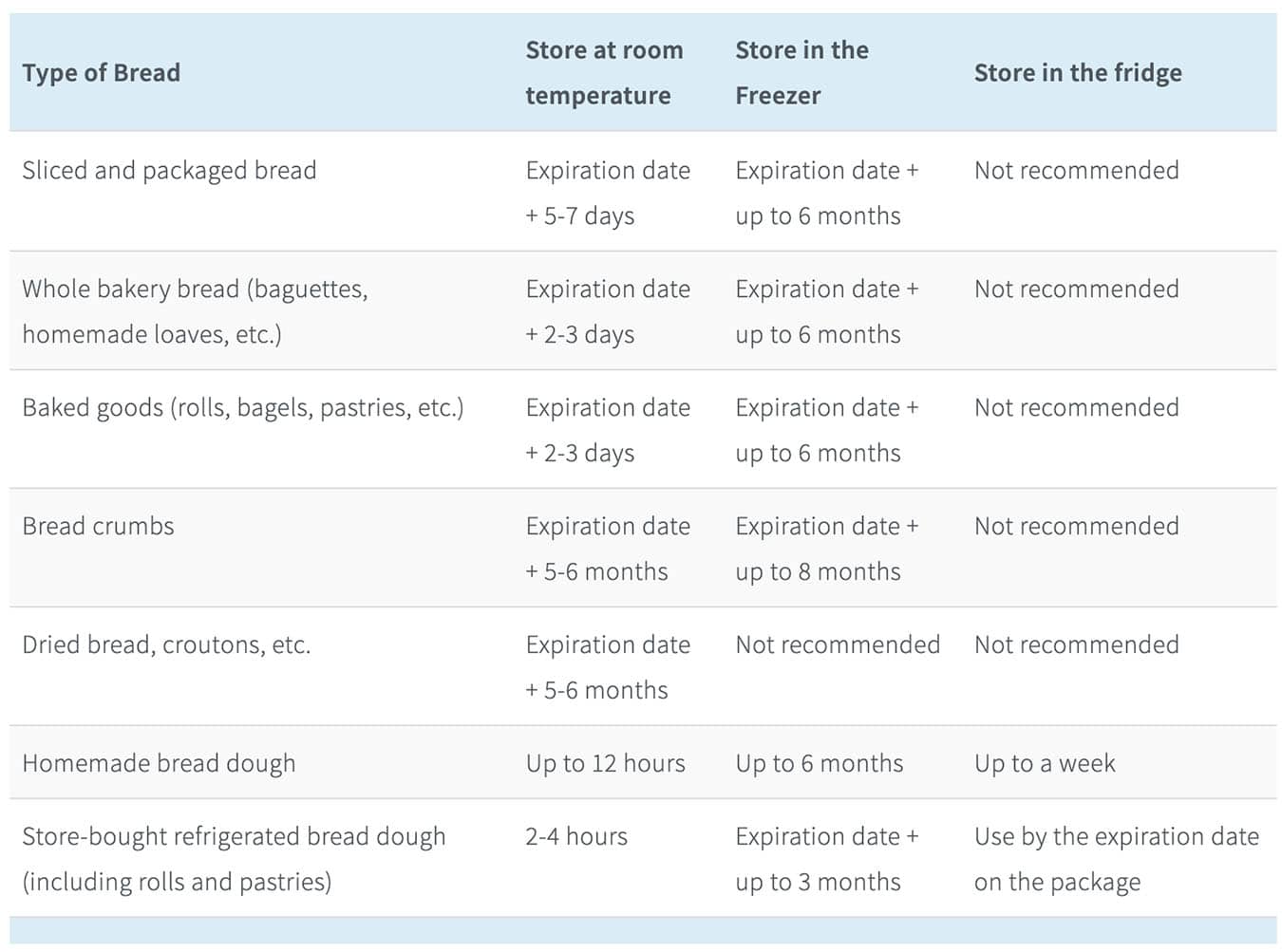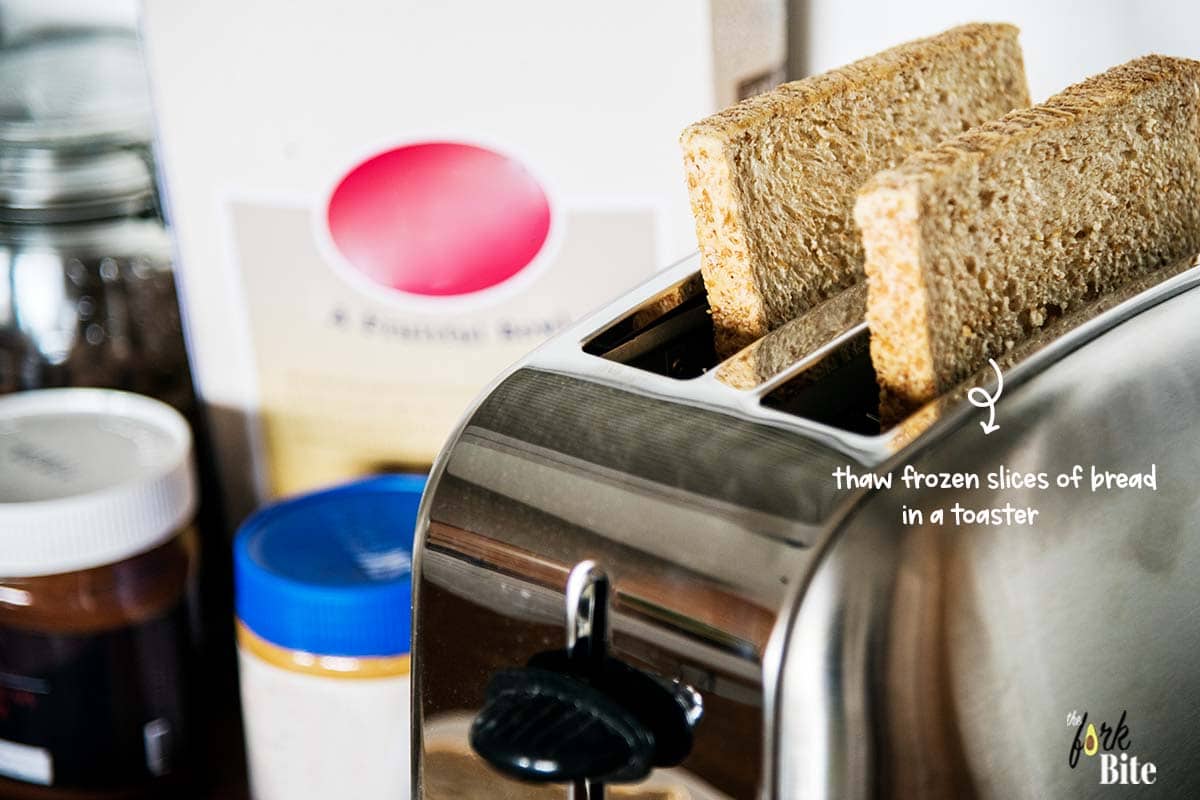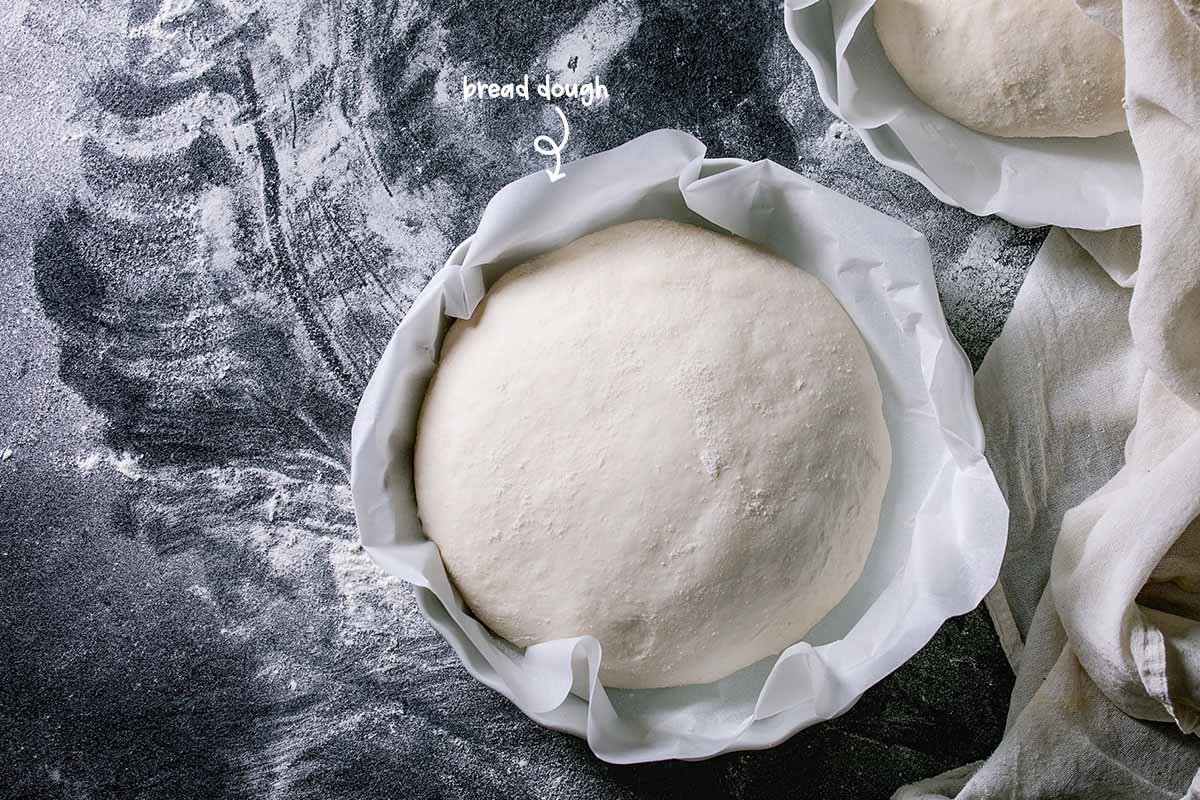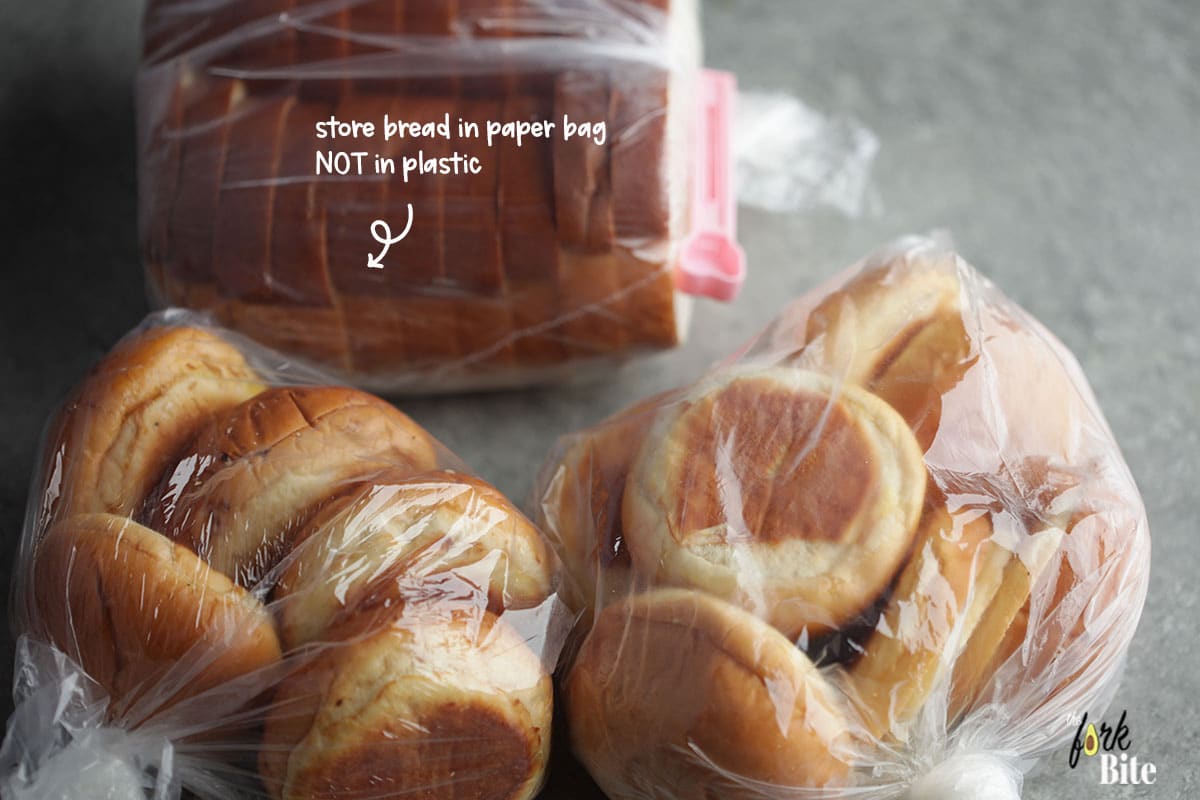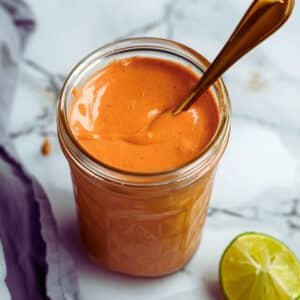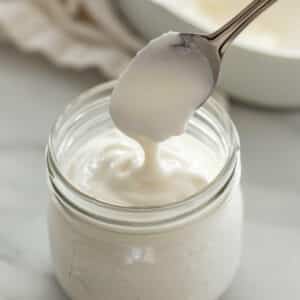Do you sometimes notice your bread giving off an odor that smells like alcohol? Would you like to minimize or get rid of this smell, or at least know why it is there and whether it is safe to eat? If these are questions you would like answers to, you've come to the right place. Read on, and all will be revealed...
First of all, you should know that detecting an odor of alcohol in bread is widespread. You will also be pleased to know that it is not something about which you need to be unduly concerned. It's all about the yeast with which most types of bread are made.
It helps to make loaves rise.
Yeast as a product falls into the fungi category. When you smell an alcohol or vinegar type aroma from your bread, it is probably the yeast that causes it.
Why bread smells alcohol?
Question:
Sometimes, when I am baking bread (particularly brioche), I pick up an intense and unpleasant alcohol smell in the finished product. Why my bread dough smells like alcohol, and what can I do to prevent it?
Here is why:
The odor you can detect is fermented yeast. It turns sugars to alcohol and carbon dioxide. If the dough gets over-fermented, it emits a smell similar to that of stale beer.
Most of the alcohol usually bake-off, but sometimes, some get left behind in the finished loaf. Types of bread that have higher yeast and sugar contents, like brioche, are more likely to get over-fermented than crustier bread like French sticks or Italian loaves, as they contain lesser percentages of yeast.
If you find your bread over-fermenting, it could be due to the dough being too warm. Alternatively, if you refrigerated the bread overnight, it might not have cooled rapidly enough to end the fermentation process.
- To combat this, have another go but use colder water or lessen the amount of yeast you add by 10%. Regarding brioche dough, this needs to be chilled straight after mixing to keep the fermentation process in check.
Understanding yeast
Yeasts are what is know as eukaryotic, single-celled microorganisms that are classified as being members of the fungus family. The first type of yeast came into being hundreds of millions of years ago.
Today, over 1,500 different species of yeast exist. They are used not only in various types of baking but in fermenting and brewing wine and beer.
Yeast is not a bacterium. Bacteria do not have a nucleus, whereas yeasts do. Yeasts prosper in many places, including animal and human skin and intestinal tracts, flowers, fruits, and even soil.
Most people think of yeast in its powder form, only because that is how it is popularly processed for various culinary needs.
Why do we use yeast in bread making?
When yeast is combined with sugar within a mixture, it triggers the process of fermentation. This action creates alcohol and carbon dioxide, which helps the bread to rise and imparts aroma and texture. It is considered to be what we class as a leavening agent.
Yeast is an ingredient in the making of both alcohol and bread, and this may be where you are most likely to encounter the smell. You are not, however detecting alcohol, you are smelling the yeast.
How does yeast leaven the bread?
In baking, yeast mixes with the sugar and oxygen in the dough, and as a result, it creates more yeast and carbon dioxide. It is this multiplying process that makes bread rise, causing it to become light and rubbery. It is a side effect of the fermentation process.
What can you do about the smell?
If you make your own bread, there are things you can do to reduce any smell of alcohol potentially. Don't forget, though, that once the bread is fully cooked, the aroma usually disappears of its own volition.
-
- It's worth reducing the quantity of yeast you use by 10%. It will still leave enough yeast to enable your bread to rise as it should. Instead of using warm water, try using cool instead of preparing your yeast for your bread mixture. This may well help.
- Reduce the time you allow for your dough to rise. Keep to recommended time scales. While you leave your bread to rise, the multiplication process continues, and it is this that is responsible for the smell.
- When you detect the smell in store-bought bread, don't worry. The odor is indicative of the way the bread was processed. You may be able to minimize the smell a little by baking or heating the loaf slightly.
When all is said and done, you need to understand that your bread is safe to eat. Don't throw the loaf away just because of the smell. Remember that the aroma is that of yeast, and that is a natural by-product. The bread is perfectly okay to eat.
How to store bread?
One way that many people store their bread is in their refrigerators. They believe it will extend the bread's shelf life. Be that as it may, there are better ways of storing it and prolonging its freshness.
The dough consists of protein, starch, and water. According to Susan Reid, the food editor of Sift magazine, when you bake it, you set the proteins. This results in the starches in the flour absorbing and holding water, and it is where that soft, beautiful interior crumb texture originates.
However, the process stops when baking is complete. The water contained within the loaf travels around as the starches "retrograde" - basically, migrate from the inside to the outside.
It is why she explains that bread kept inside its plastic wrapper will get tough on the outside while its crust becomes less crisp.
Does refrigerating the loaf slow this process down? No, it doesn't. In fact, it accelerates it.
What refrigeration does is to facilitate the movement of the water in the bread, quickening the change of the loaf's texture.
Refrigeration shortens your bread's shelf-life.
-
- Refrigerating bread will make its texture deteriorate more rapidly.
- Bread experts say it should not be kept on a counter for longer than two or three days.
- If you don't eat an entire loaf within the first few days baking or purchase; consider freezing it until you want to eat it.
Secrets for storing bread and making it last longer
#1. Freeze Your Bread
Freezing bread is undoubtedly the number one way of preserving it in the same condition at which it was bought or baked - with a crusty outer and a soft inner. When you freeze bread, you significantly delay the process of staling. What is more, when you reheat it in your toaster or your oven, you re-gelatinize the starches, which gives the bread back its chewy, springy, texture.
But do not try to refreeze it again. It's a one way only process. It could make you ill.
Here's how to freeze bread the right way
-
- Ensure your loaf of bread is tightly wrapped in plastic, or if you prefer, you can put it into an airtight plastic bag or a zip-top bag - squeeze as much air out as you can, seal, and pop into your freezer. Tip: I usually insert pieces of wax paper between the slices because it makes it easier to take out as much as I want.
- After you've taken it out of the freezer, and just before you eat it, pop it into a prewarmed oven. This rejuvenates it beautifully. You can freeze bread in this way for up to two or three months.
- If you leave bread on the kitchen worktop, it may get soggy. It toasts okay, but take it from me - it's better left in the fridge.
How to thaw frozen bread - a fool-proof way to defrost any kind of bread to perfection
1.) To thaw a whole loaf of bread:
-
- Remove the frozen bread from its plastic wrapper and put it into the refrigerator to thaw. If you are defrosting a complete loaf, let it thaw overnight. If you only want the odd slice or two, two or three hours will be sufficient.
- During the thawing process, the bread will take back some of the moisture that gathers in the plastic wrapper, and it will regain much of its original texture.
- Having softened it in the fridge, you put it into an oven pre-heated to 380°F for between three and five minutes. This will rejuvenate both crust and crumb. You might think it gets too squidgy, and it's not yet ready, but trust me, it will be.
- If you don't like the idea of defrosting a frozen loaf - no worries - you can reheat it directly from the freezer. A whole loaf needs 25 to 30 minutes to reheat in an oven pre-heated to 380°F.
#2. To thaw individual slices of bread
-
- The easiest, and I think the best way to thaw frozen slices of bread is straight from the freezer into your toaster. Don't worry. If you don't want toast, a quick few seconds in the toaster is enough to thaw and warm it, giving it back much of its fresh-baked feel and taste.
#3. To thaw a bread dough
-
- Freezing bread doesn't destroy the yeast. It only slows it down. The important thing when defrosting bread dough is to be gentle with it. Warm it gently and evenly. This will bring the yeast back to life without damaging it.
- Take a bowl, lightly oil it, or apply the cooking spray, and place the frozen dough inside.
- Cover the whole thing with cling film, or if you prefer, a clean towel, and leave the environment gently warm.
- An oven warmed to 100°F is fine. Alternatively, you can place the dough near a heating vent, or at the back of the stove or even put it in on a warm windowsill.
- It will take somewhere between half an hour to two hours to thaw. However, you also need to let rest it for a while longer so the yeast can revive and make the dough rise before you try to use it.
How long does bread last in the freezer
You can keep bread in a freezer for between three and six months. However, after about one month, it's taste will start to dull.
It's best to put it in the warmest part of your freezer like somewhere near the door, for example, which will also be handy if you intend to use it often for making sandwiches.
There is an interesting infographic here from the freezerlabels.net website. It displays the information it has collected from various sources such as the FDA and FoodSafety.gov and presents it in one handy, easy to reference infographic.
It recommends the lengths of time you can keep various foods safely for and indicate the type of foods that should never be frozen.
#2. Store your bread in a breadbox
Although it's not a freezer, a good breadbox will provide an environment that balances humidity. You need to maintain a soft interior, and air circulation, which is necessary to keep the crust, crusty.
If you are worried about pests and you would prefer to store your bread in an airtight container. You can try putting a separate slice of bread in with your loaf.
The theory is that the slice (which has more surface area), will attract water, thus controlling the amount of water in the container.
I think a box is preferable because it will provide better air circulation. Some people recommend ceramic containers, but you can also get breadboxes made out of bamboo. There are also enamelware varieties that could be of interest.
The larger the quantity you put in your breadbox, the higher the humidity level will become, so be careful not overfill it. You should also avoid keeping bread in a paper bag inside a breadbox. This tends to trap moisture, which will end up damaging the crust.
If you tend to buy pre-sliced bread, then a breadbox might not be the right solution. If, on the other hand, you like to purchase store-bought artisan bread (or, of course, if you make your own), I would heartily recommend storing it in a breadbox as this will keep it in peak condition for longer.
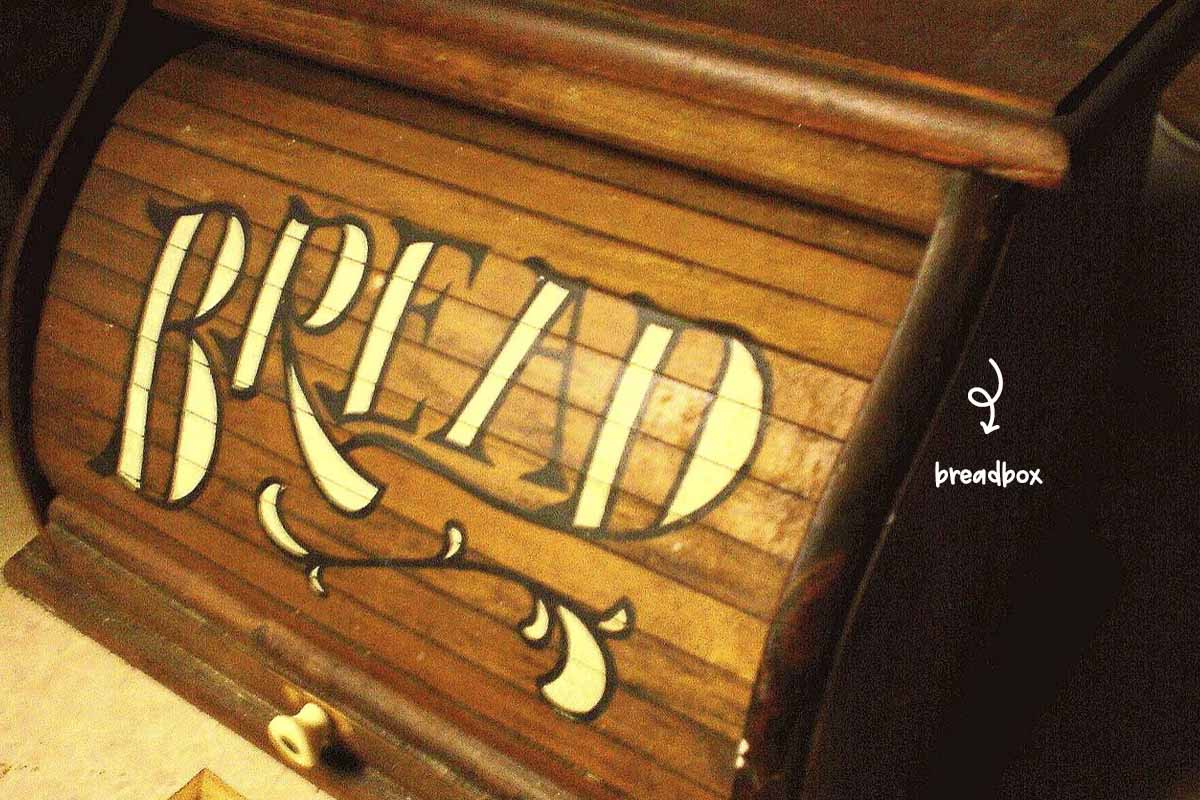
#3. Store in the paper, never plastic
When you buy a fresh loaf of bread, It is best to consume it within two to three days. If you intend to eat it straight away, keeping it in a paper bag is preferable.
You might think that storing bread in plastic is a good idea. However, the matter is that this will encourage mold to grow and quickly make the bread inedible. I've also got into the habit of saving the heels of my bread so that I can use them for covering the cut, exposed face of the loaf.
Protecting the cut face of your bread will help it to maintain its freshness.
If you're looking for a flexible and eco-friendly way of preserving your bread, you might consider buying reusable bread bags.
Pick up reusable bread bags.
These days, there is a good selection of reusable bread bags on the market. As well as being machine washable, they are also freezer friendly.
You can take them with you when you go shopping and put your newly bought fresh loaves straight into them. They are a handy alternative to paper bags that have a habit of getting easily torn and letting crumbs cascade onto your kitchen work surface. They are also a much more eco-friendly alternative.
Reusable bread bags are all made using breathable materials, So they behave in much the same way as paper bags do but without the waste. You can buy them anywhere from $7.00 to $20. If you love your bread and the environment, too, they are an excellent investment.
Reusable bread bags are the way to go if you're looking for something that will preserve your bread, and that is both versatile and eco friendly.
Where exactly you store your bread is critical.
In terms of storing your loaf of bread, where you keep it can be just as critical as how you keep it.
This is because of the heat that your fridge emits. It's like storing your loaf close to your dishwasher. The heat and moisture that these type of appliances generate is just not bread friendly.
The best thing to do is to store your bread in an area of the kitchen that is both cool and dry. If that rules out your kitchen counter, you could put it in a cabinet or a deep draw instead.
#4. Don't refrigerate it!
The refrigerator, which revolutionized the way we preserve the life of our foods, is, in fact, the very last place you should store your bread. By putting it in the fridge, you are unwittingly activating the staling process.
Harold McGee, the author of "On Food & Cooking," advises us that refrigerated bread can go stale six times faster than bread kept on the counter. It is caused by something known as the "recrystallization of starch."
Flour made from wheat (the type used in the baking of most bread), is loaded with starch. It comes in a crystalline form and breaks down readily when mixed with water and oven-baked at high temperatures.
As baked bread begins to cool, the starch commences recrystallizing. According to Serious Eats, when the bread is kept in a colder place, It will make this starch crystallize even faster. When you think "refrigerated bread," you believe unknowingly, "stale bread." It's time to rethink.
#5. Not all bread stale the same
The bread that contains added fat, such as brioche and challah, will stay fresher for longer. On the other hand, French baguettes will stale very quickly due to their narrow shape and the fact that they contain little fat. Baguettes should be eaten on the day they are baked
Sourdough bread puts up more resistance against mold than any other bread types. This is due to the acidity it contains, which inhibits the proliferation of bacteria and mold.
If you are a fan of sourdough taste in your sandwiches, you should consider yourself fortunate. Your sandwiches will stay fresher for longer than sandwiches made with typical sandwich bread.
Other ingredients could be present in your bread, and that might have a role to play as well.
The bread that contains fewer preservatives will go stale quicker than bread that has things like artificial flavors, colorants, and other preservatives in it.
But, no matter what you do, your bread will sometimes go stale when all is said and done. However, looking on the bright side, there are plenty of scrummy things you can do with it when it is going or has gone, stale.
How about making croutons? Staleness is not an issue with these little snacks, because they already are.
What to do with the stale bread
There are lots of ways to give new life to your stale bread that's been sitting in your pantry. Here are some of my favorites. NOTE: If mold is growing on the bread, don’t eat it, discard the entire loaf asap. These guides are NOT for moldy, spoiled bread!| What to do with stale bread | Preparation | Bake Time |
|---|---|---|
| For bread that is soft on the inside yet crispy on the outside (like loaves - unsliced) | Sprinkle loaf with water | Bake at 350° about 10 minutes |
| For soft bread | Wrap it in aluminum foil | Bake at 350° for 15-20 minutes |
| Make Croutons | Chop bread into cubes | Bake at 350° about 30 minutes |
| Make Breadcrumbs – oven | Place bread slices on baking pan | Bake at 300° about 30 minutes then crumble |
| Make Breadcrumbs – freezer | Place loaf in the freezer | Grate on the large holes of a cheese grater |
| Make French Toast | Slice and dip into egg batter | Pan fry for a few minutes on each side |
| Make Bread Pudding or Crock Pot French Toast | Pour cream mixture over bread pieces in baking dish | Bake at 350° for 45 Minutes in oven or 7 hours in crock pot |
| Make Stuffing | Break into pieces and add to melted butter & cooked veggies | Bake with your meat |
Do you know what the color of your bread bag twist ties means?
Were you aware that bakeries have a color code system for their twist ties? Well, they do, and it relates to the day on which the bread was baked.
Once baked, it gets distributed daily to stores barring on Wednesdays and Sundays. Most large bakeries apply the following codes:
-
- Blue on Mondays
- Green on Tuesdays
- Red on Thursdays
- White on Fridays
- Yellow on Saturdays
They do this to help staff in grocery stores remove stale bread from the shelves. The simplest way of remembering how this color code system works is to remember that it runs in alphabetical order.
In other words, the earlier the first letter of the color occurs in the alphabet, the earlier the bread came out of the oven. It is a fact, confirmed by ever-cynical Snopes.com.
Quick Note:
Not all bread companies adhere to these same color code rules. The easiest way to cheque is by reading the sell-by date on the packaging before you buy the bread.
Bread related questions
How Do I Know If My Bread Has Gone Bad?
The bread that you buy from the grocery store should have an expiry date on the packaging. However, you should be aware that this date is only a suggestion.
More often than not, it is quite possible to eat the contents after the expiry date shown.
In the majority of instances, even correctly stored bread will one day get dry and stale. But don't lose sight of the fact that you can use stale bread for making things like breadcrumbs, bread pudding, and croutons, for mentioning but a few.
Even when bread has turned dry and stale, you can still eat it quite safe as long as it hasn't spoiled. In some instances, however, the bread will inevitably spoil and go off.
Know the exact expiration date of the best form of carbs.
Rule #1: If mold is growing on the bread, don't eat it.
-
- The shape of the mold and its proliferation will indicate how long it has been there. The color of the mold will depend on the environment the bread has been kept in and what type of bread it is.
- Bread with mold on it should be thrown away. It mustn't be eaten or used to cook other dishes or preparations.
How to tell if a white powdery substance on the crust is flour or mold?
If you can, scrape a little of the suspicious substance off with your fingernail.
If it comes off and is powdery in appearance and the bread smells okay, the odds are that it is flour.
If, however, it comes off in clusters, it is, in all likelihood, mold.
Is bread mold dangerous?
Yes, bread mold can prove dangerous, especially for anyone sensitive or allergic to it. Inhaling mold spores may cause inflammation to a person's respiratory system.
When bread begins to turn moldy, it is an indication that harmful bacteria could be present - bacteria not visible to the human eye.
Moldy bread should be thrown away.
Fresh bread will quickly go stale if allowed. Nonetheless, there are many uses and excellent recipes that call for it.
Even though you can keep fresh bread for longer by freezing it, you should always check to make sure it hasn't gone moldy. If it has, throw it out.
Rule #2: Bread's texture can tell you a lot.
Typically, French bread has a crusty exterior and a soft, fluffy interior. Wonder Bread, too, has a similar "pillowy" feel about it.
Sourdough is quite different. It is denser and chewier. It has also got more of a spring to its texture. All of these different characteristics depending on the bread you are eating at the time.
Most of us can only tell if the bread is stale when we touch it. But if you don't mind stale bread, then what the heck? Whatever turns you on. If it's not your thing, there is always a hot pan nearby and a tasty French toast recipe to fall back on.
Rule #3: A strange smell.
If your bread has an odd odor or a weird color, it is likely to have gone off. If it is moldy, don't smell it too deeply. You do not want to be inhaling mold spores.
How long does bread last in the fridge?
The golden rule is that fresh bread should never be put in the fridge. Never!
The majority of bread, regardless of how well packaged they are, will eventually go dry and become stale in a refrigerator. Bread ought to be kept in a pantry, a bread box, or be frozen.
The difficulty when preserving bread is that when kept in an airtight container or a plastic bag, moisture builds up and makes it go moldy.
If kept in a breathable container, like a paper bag, it will become dry and stale.
The best way to enjoy shop-bought bread is to eat fresh before it passes the expiry date shown on the packaging.
Bread's shelf life is dependent on the type, and what the shown expiry date is.
Can old bread make you sick?
What is old bread? If it is just dry and stale, it is safe to eat, if you have a mind to. If, however, it is moldy, you must not attempt to eat it.
When you spot signs of mildew or mold on bread or inside its packaging, avoid it altogether. Don't pick your way through it, looking for uncontaminated slices. Throw the whole thing away.
Exposing mold to heat might destroy any microorganisms. That doesn't mean though that you can toast a moldy slice of bread and make it okay to eat. The temperature wouldn't be high enough, and even if it were - it would burn the toast anyway.
If you have a strong, healthy immune system, consuming moldy bread might not be hazardous. It might just make you throw up.
People with a sensitivity or allergy to mold could irritate their eyes, nose, or throat.
Is it safe to eat bread passed the expiration date?
What is the importance of bread's "best by" date? Is it awful to eat afterward?
This question arose recently. I had a loaf of bread in the refrigerator that was just past its sell-by date. I have to say it looked fine. Apart from being a little cold, which indicated the fridge was still working, it wasn't hard or moldy. Was it safe to eat?
The reality is that the" best by" date is not the be-all and end-all. It is dependent on what type of bread it is, too, as far as Ask.com is concerned.
You can eat bread safely past both its expiry date and its "best by" date. These dates can be exceeded by as much as five to seven days without concern. Fresh bakery bread, on the other hand, only has a lifespan of two to three days past those recommended dates.

